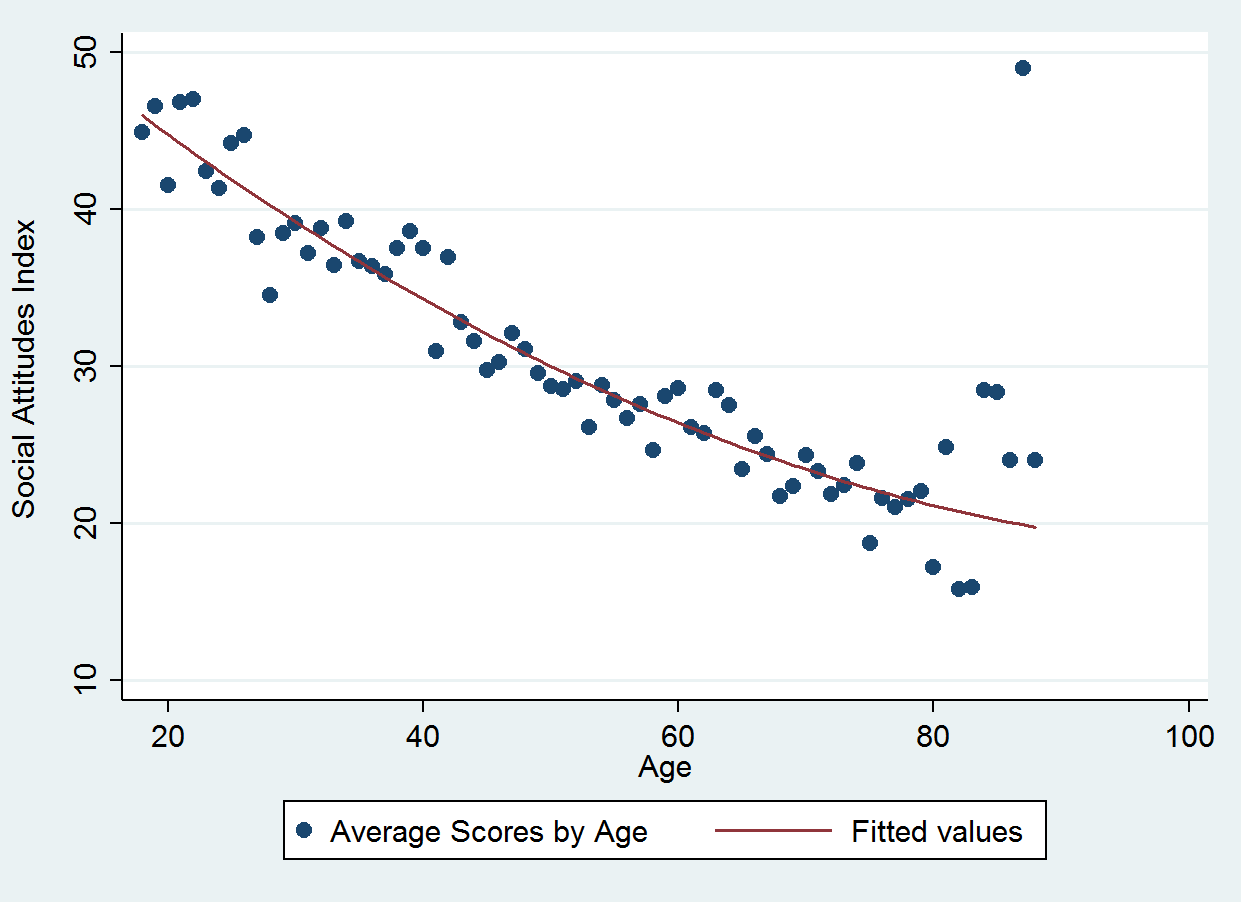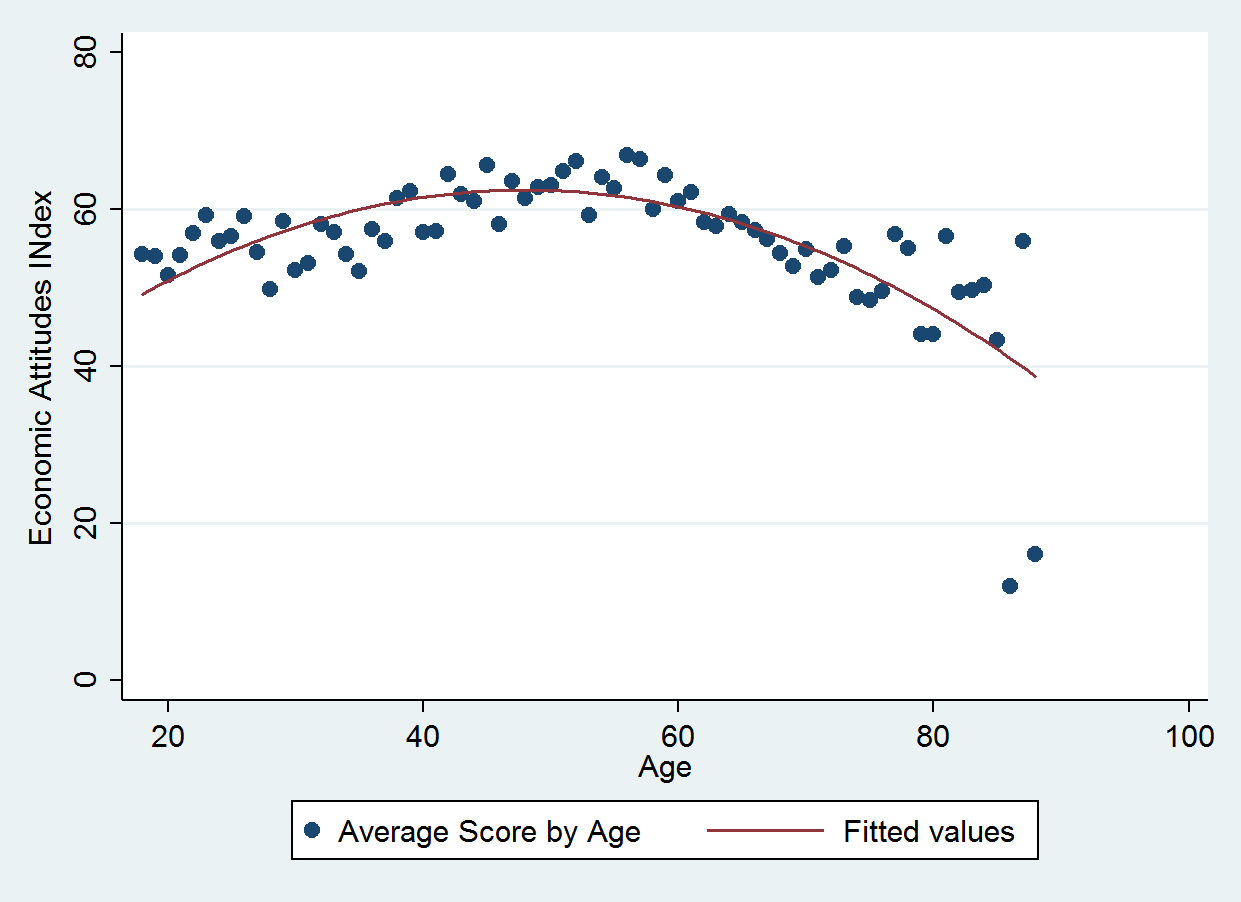By: Cesira Urzì Brancati, George Holley-Moore, Helen Creighton, Ben Franklin
Vision and values matter too
As previously discussed in this blog, the economy dominates political discourse in the media. But for many people a wider vision of what type of society we want to live in, and how we treat others around us, is also important in shaping political choices on Election Day.
So is it our social values that most determine which party we vote for, or our economic values? And how much does our age have an effect on this? Using the 2015 British Election Study (BES), we have created both an economic and a social values index, and explored the results below.
Social attitudes index
We used three questions from the British Election Study in which respondents are asked to state whether they think “Attempts to give equal opportunities to ethnic minorities/women/gay and lesbians have gone too far (equal to 1) or have not gone far enough (equal to 5) in Britain”.
We then combined the results from the three questions and build an indicator for Social Attitudes ranging from 1 (not liberal at all) to 125 (extremely liberal).
As you can see from the graph below, social liberalism decreases with age quite dramatically. Remember this a snapshot of today’s population – there is of course the age-old question of age vs cohort. Today’s young people, who on average hold liberal attitudes on equal opportunities for women, the LGBT community and ethnic minorities, may very well become increasingly illiberal as they age. Or perhaps this social liberalism will continue in this cohort of younger people as they grow older.
Whichever is the case; in 2015 we are seeing a stark divide in social attitudes by age.

Economic attitudes index
We then combined the following three questions and built an indicator for Economic Attitudes, also ranging from 1 (not interventionist) to 125 (extremely interventionist).
1. Government should redistribute income from the better off to those who are less well off (scale from 1 to 5 where strongly disagree=1 and strongly agree=5)
2. Big business takes advantage of ordinary people (scale from 1 to 5 where strongly disagree=1 to strongly agree=5)
3. Cuts to public spending in general have gone too far/not far enough (scale from 1 to 5 where gone way too far=1, not nearly far enough=5)
In this instance, economically interventionist would indicate preference to the state redistributing wealth and providing more public services, whereas not interventionist would indicate limited state involvement in the economy. We also used information on big business, since it can be seen as a preference for state regulation.
We can see that in 2015 age does have an effect on our economic attitudes, but not in a linear way (which is the case with our social attitudes). Using our economic attitudes index as an indicator we can see that the electorate of 2015 steadily increase in traditionally left-wing economic beliefs (a larger role of the state in the economy, redistribution of wealth through taxation) with age, with these beliefs peaking in the mid-40s (interestingly this is the age usually associated with peak earning power). Traditionally right-wing economic attitudes, of limited state involvement and free-mark values, then become more frequent in our older population, with a steady shift to the right with age.

No party would readily admit to targeting one section of society at the expense of others. All believe, at least publicly, that their vision of how the economy and wider society should be shaped is best for everyone in society. But these figures show that age has a significant impact on people’s political attitudes, both economic and social, and thus it is perhaps inevitable that parties will appeal to some groups more than others.
